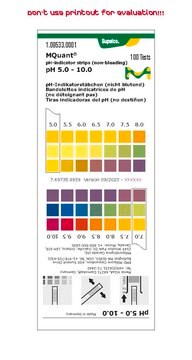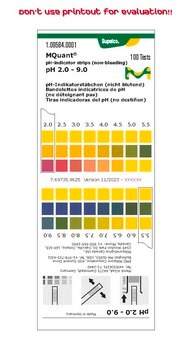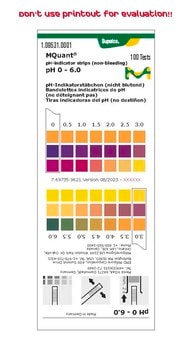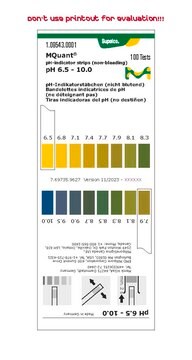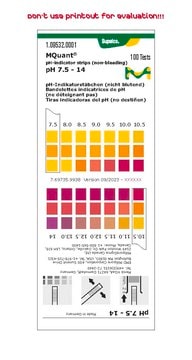P4536
pH test strips
pH 4.5-10.0, resolution: 0.5 pH unit
Sign Into View Organizational & Contract Pricing
All Photos(1)
About This Item
UNSPSC Code:
41100000
NACRES:
NB.79
Recommended Products
feature
non-bleeding: no
refill: no
pH measuring range
4.5-10.0, resolution: 0.5 pH unit
detection method
colorimetric
Looking for similar products? Visit Product Comparison Guide
General description
Non-bleeding pH color strips. Simply immerse the strip in the test solution until color development is complete. Then compare the developed color to the sequence chart on the package, and read the pH. The range covered by each type of strip is divided into graduations as given below. Each package contains 100 strips in a clear, plastic container with a snug fitting top.
Certificates of Analysis (COA)
Search for Certificates of Analysis (COA) by entering the products Lot/Batch Number. Lot and Batch Numbers can be found on a product’s label following the words ‘Lot’ or ‘Batch’.
Already Own This Product?
Find documentation for the products that you have recently purchased in the Document Library.
Cláudia Raposo De Magalhães et al.
Food chemistry, 305, 125508-125508 (2019-10-18)
Fish is one of the most common elicitors of food-allergic reactions worldwide. These reactions are triggered by the calcium-binding muscle protein β-parvalbumin, which was shown to have reduced immunoglobulin E (IgE)-binding capacity upon calcium depletion. This work aimed to reduce
Cláudia Raposo de Magalhães et al.
BMC genomics, 21(1), 309-309 (2020-04-21)
Aquaculture is a fast-growing industry and therefore welfare and environmental impact have become of utmost importance. Preventing stress associated to common aquaculture practices and optimizing the fish stress response by quantification of the stress level, are important steps towards the
Magdalena Szczesny et al.
mBio, 9(4) (2018-08-23)
Biofilms are often described as protective shelters that preserve bacteria from hostile surroundings. However, biofilm bacteria are also exposed to various stresses and need to adjust to the heterogeneous physicochemical conditions prevailing within biofilms. In Gram-negative bacteria, such adaptations can
Our team of scientists has experience in all areas of research including Life Science, Material Science, Chemical Synthesis, Chromatography, Analytical and many others.
Contact Technical Service
